
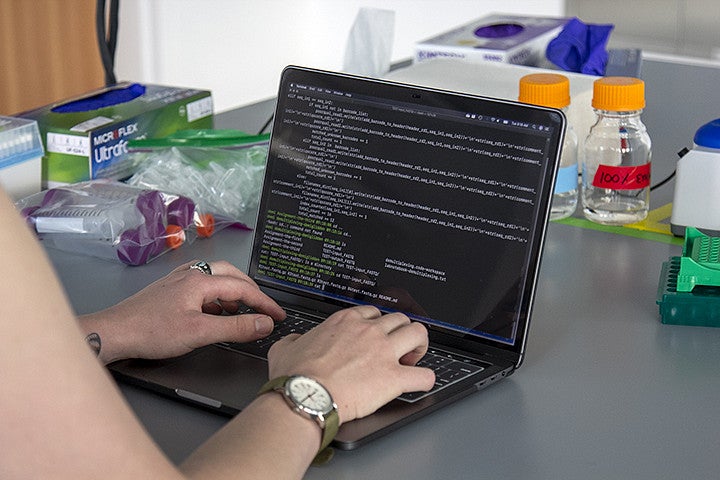
BI 621: Computational Methods in Genomics Analysis
Credits: 4
Instructors: Leslie Coonrod, Jason Sydes, Maxine Wren, Hope Healey
Term: Summer
Students learn to think algorithmically by writing scripts in Bash and Python. They manage and analyze next generation sequencing (NGS) data, navigate the UNIX command line, and utilize tools on both their computer and UO’s high-performance computer cluster, Talapas.
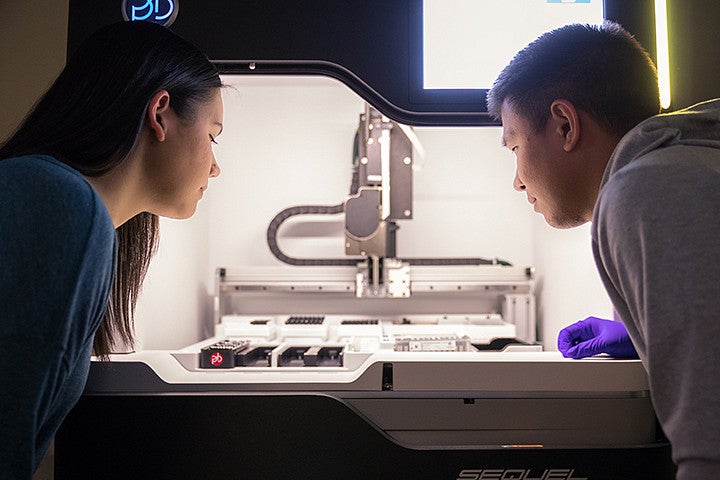
BI 622: Genomics Techniques
Credits: 4
Instructors: Maxine Wren, Leslie Coonrod, Jason Sydes, Hope Healey
Term: Summer
Learn about experimental design, genomics history and technology, and the molecular techniques for preparing high-quality nucleic acid sequencing libraries for both short and long-read sequencing. This course also develops students’ written and oral scientific communication skills.
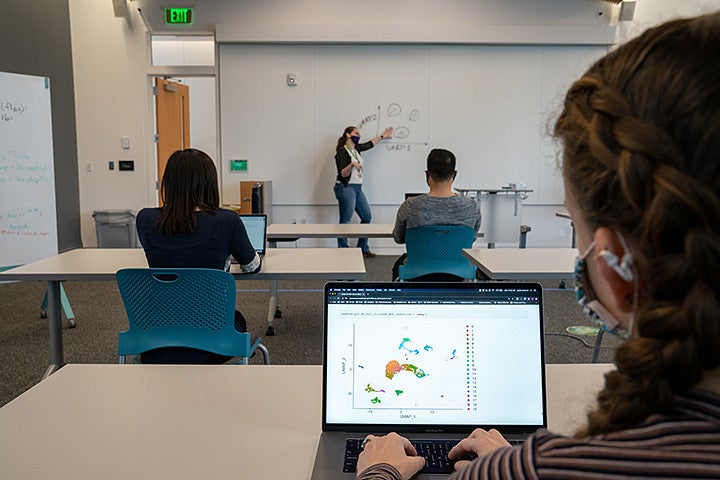
BI 623: Topics in Genomics Analysis
Credits: 4
Instructors: Lisa Bramer, Leslie Coonrod, Maxine Wren, Hope Healey
Term: Summer
Students are introduced to wide-ranging topics including phylogenetics, comparative genomics, transcriptome assembly and assessment, metagenomics, RNA-seq preprocessing, alignment and enumeration, and differential gene expression analysis, as well as statistics used in these analyses. Write scripts to manage and visualize data using R/RStudio, create professional reports using R markdown, and continue honing Python scripting skills.
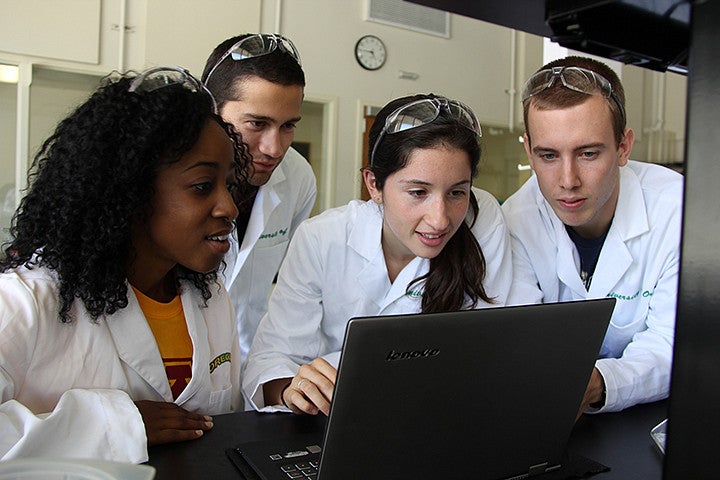
BI 624: Genomics Research Lab
Credits: 4
Instructors: Leslie Coonrod, Jason Sydes, Maxine Wren, Hope Healey
Term: Fall
Students write algorithms to analyze NGS data. Expanding upon topics covered in the summer, students are exposed to new topics in genomics analysis, including single-cell RNA-sequencing and statistical classification methods. Students begin team projects, in which they use real world data supplied by UO and external partner labs. This project continues through winter in BI 625.

BI 610: Advanced Biological Statistics for Omics Data
Credits: 4
Instructors: Lisa Bramer
Term: Fall
This course will focus on fundamentals of applied statistical analysis for omics data. Students will gain an understanding of probability theory tenets such as sample spaces, basic and conditional probability, distributions, and Bayes’ Theorem. Course material will focus on practical application of non-parametric and parametric statistical tests, regression, generalized linear models, and experimental design to biological data. A strong emphasis is placed on equipping students to have the skills to determine the most appropriate statistical model/test given an omics dataset and biological hypothesis. Computing is done in R.
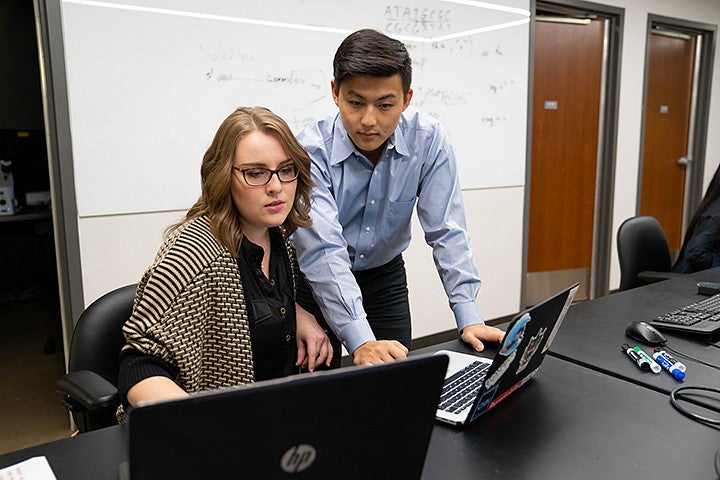
BI 610: Professional Communication in Science I
Credits: 1
Instructors: Leslie Coonrod, Stacey York
Term: Fall
Students learn best practices for professional scientific communication. Core elements include composing a competitive resume, providing impactful answers during behavioral and technical interviews, and building a strong professional network. Students prepare for internships through a variety of practical workshops.

BI/CH/CS: Optional Elective
Credits: Varies
Instructors: Varies
Term: Fall
In fall and winter terms, students may take optional graduate level elective courses. Students should consult with program faculty when considering electives.
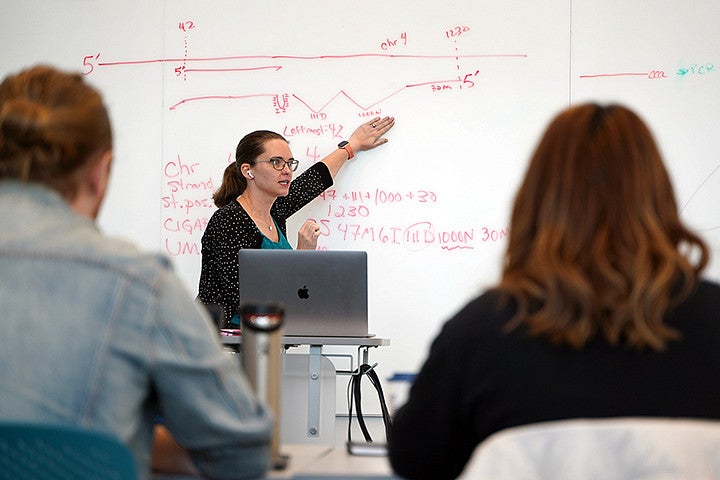
BI 625: Advanced Genomics Analysis
Credits: 4
Instructors: Jason Sydes, Maxine Wren, Leslie Coonrod, Hope Healey
Term: Winter
Students continue team projects from BI624 and design and present a poster during the track’s annual scientific conference, Genomics in Action. They also gain exposure to special topics/projects throughout the term, including object-oriented programming, structured query language (SQL), analyzing PacBio data, creation of custom figures using Python graphics libraries, and the use of containers and cloud computing.
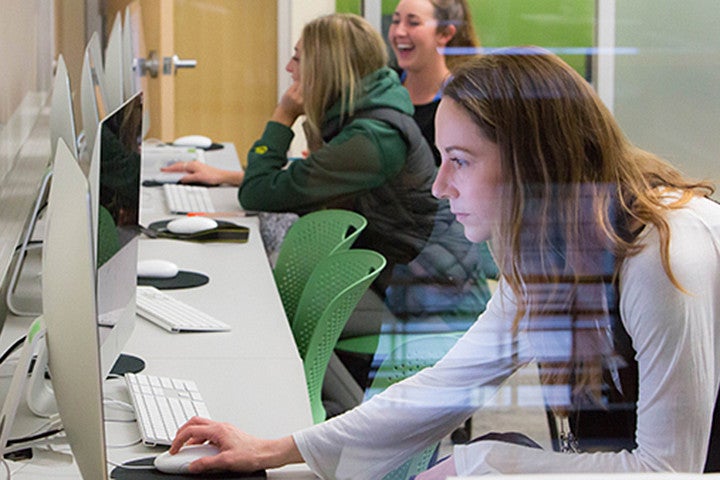
BI 610: Machine Learning for Omics Data
Credits: 4
Instructors: Lisa Bramer
Term: Winter
This course introduces core concepts and methods in modern multivariate data analysis and applications to omics data. Major concepts and topics include model selection, validation and bootstrapping, feature selection, and model assumptions for unsupervised and supervised statistical learning. Students will learn to apply a variety of models such as polynomial and logistic regression, discriminant analysis, elastic nets, tree-based methods, k-means, and hierarchical clustering to biological data analysis problems. Methods are presented without heavy reliance on formulas and complex mathematics and instead focus is placed on important the important elements of the application of modern data analysis. Computing is done in R and Python.

BI 610: Professional Communication in Science II
Credits: 1
Instructors: Leslie Coonrod
Term: Winter
Building upon fall term with a strong focus on job searches, preparing for interviews, and cover letter writing.
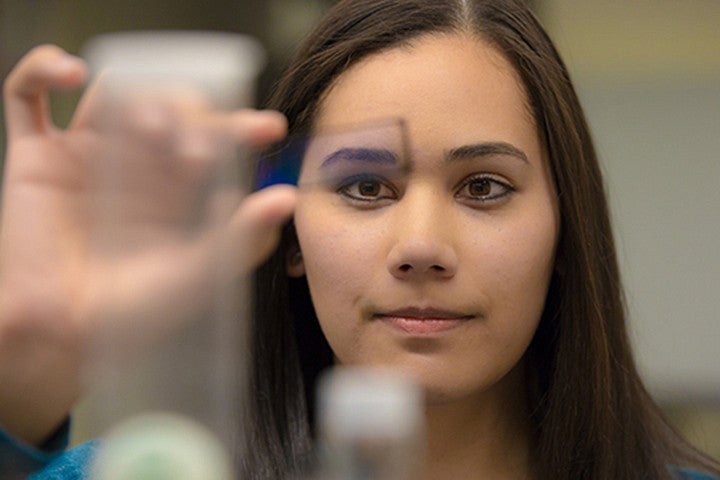
BI 601: Research Internship
Credits: 10 per term, 30 total
Instructors: Leslie Coonrod, Jason Sydes, Maxine Wren, Hope Healey
Term: Spring, Summer, Fall
Within an academic, clinical, industrial, or national lab setting, students gain hands-on experience in the application of their knowledge. Each term, students write a review paper to demonstrate advancement of technical knowledge and development of written communication skills. Learn more about the internship by visiting our website at internship.uoregon.edu/bioinformatics-and-genomics-internships.
